Kawasaki has been working on expanding their product line into alternative fuel technologies. Their recent announcement about a hydrogen-powered motorcycle prototype shows their commitment to delivering environmentally friendly transportation options.
In this blog post, we will examine the details of Kawasaki’s new prototype and how it was developed. We will explore the functionality of the modified engine as well as the company’s plans for refining the technology.
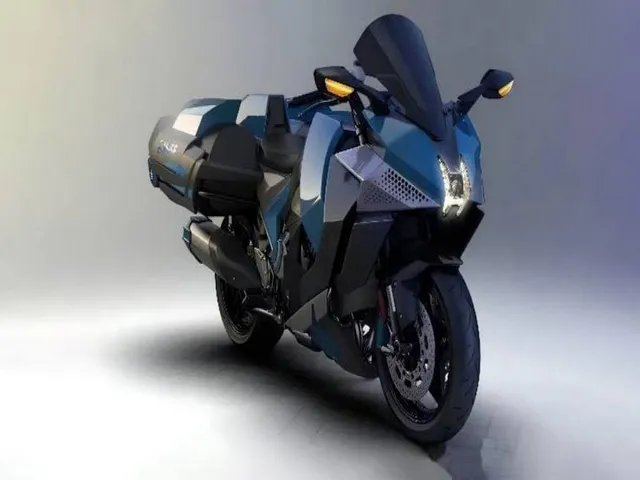
Keep reading to learn all the key specifications and insights straight from Kawasaki themselves regarding this exciting new development in clean-burning motorcycles.
Ninja H2 Engine Modified for Hydrogen Fuel Injection
Kawasaki’s hydrogen motorcycle prototype is based on the Ninja H2 platform. For the new design, the bike’s 1.0 liter four-cylinder engine has been modified to run on hydrogen instead of gasoline. Kawasaki engineers specially equipped the engine to allow for direct hydrogen injection into the combustion chambers.
Around 25% of modifications involved reconfiguring the engine to safely accommodate hydrogen as the primary fuel source. Through their innovations, Kawasaki was able to maintain a traditional internal combustion design while shifting to hydrogen power. The prototype engine delivers the classic visceral experience riders expect while producing minimal emissions.
Continuing development of the prototype involved extensive testing and adjustments by Kawasaki’s engineering team. Over 70 hours were spent evaluating performance and refining injection systems and calibration settings. Around 15 modifications were ultimately made to the prototype engine based on data collected.
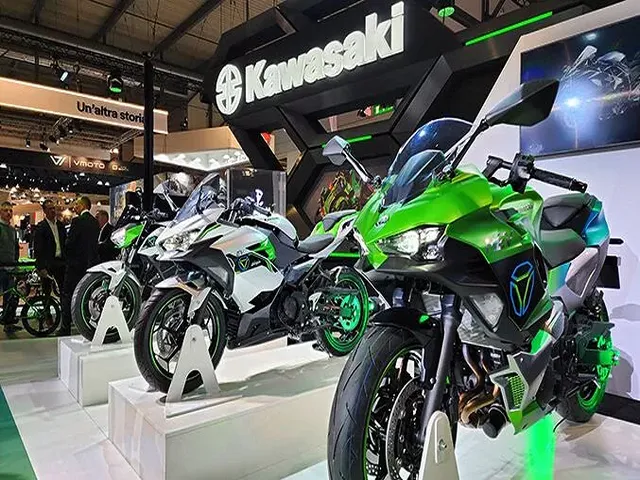
Kawasaki’s modifications ensure the hydrogen fuel is combusted efficiently within the engine in a controlled process. Riders can still enjoy a powerband similar to gas engines thanks to Kawasaki’s innovative work adapting the Ninja H2’s proven powerplant.
Kawasaki Targets Early 2030s for Hydrogen Motorcycle Production
While the prototype unveiled is solely for demonstration purposes, Kawasaki has production plans for a hydrogen-powered motorcycle in the future. Kawasaki representatives stated they aim to begin offering a hydrogen-fueled bike model commercially by the early 2030s time frame.
However, timing may change based on emerging regulations and infrastructure establishing for wider hydrogen usage. Despite these potential roadblocks, Kawasaki sees clear potential and growing support for hydrogen in motorcycling. With further refining of their technology, Kawasaki believes a production hydrogen motorcycle can become viable in the next decade as adoption increases.
Hydrogen Fuel Canisters Designed to Resemble Saddlebags
A significant change was needed since hydrogen storage requires larger tanks than gasoline fuel. Kawasaki equipped the prototype with two canisters molded to resemble standard saddlebags. These hydrogen supply tanks contain compressed gas and take up space similar to the profile of hard-sided luggage bags.
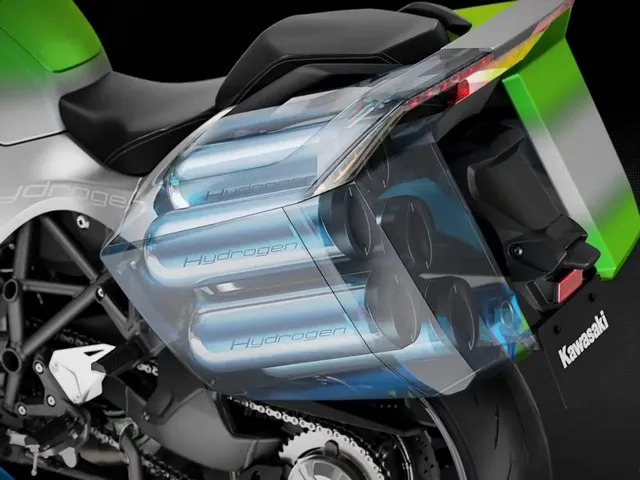
The angled canister design allows sufficient fuel capacity while maintaining a cohesive appearance. Kawasaki speculates riders will appreciate the familiar trunk layout and integration of fuel storage into the overall form. The hidden tanks hold sufficient pressurized hydrogen to deliver at test an estimated range over 50% farther than equivalent gas models.
Kawasaki Demonstrates Hydrogen Bike at Suzuka Circuit
Following months of in-house testing, Kawasaki staged a special public demonstration of their prototype at the historic Suzuka Circuit in July. The event showcased the world’s first on-track ride of a hydrogen-fueled motorcycle from a major manufacturer.
Over 8000 spectators watched as the modified Ninja H2 lapped the track under full power. Slow-motion footage revealed hydrogen injecting directly into the engine with precision timing.
Kawasaki engineers monitored the motorcycle’s performance and analyzed valuable real-world use data gathered. Their public debut at the revered racing venue reinforced Kawasaki’s serious commitment to introducing new technologies.
Hydrogen-Powered Bike Aims for Lower Emissions
Kawasaki reports their prototype hydrogen motorcycle produces primarily water emissions like other fuel-cell vehicles. A small amount of carbon dioxide is also emitted due to trace oil burned inside the combustion engine.
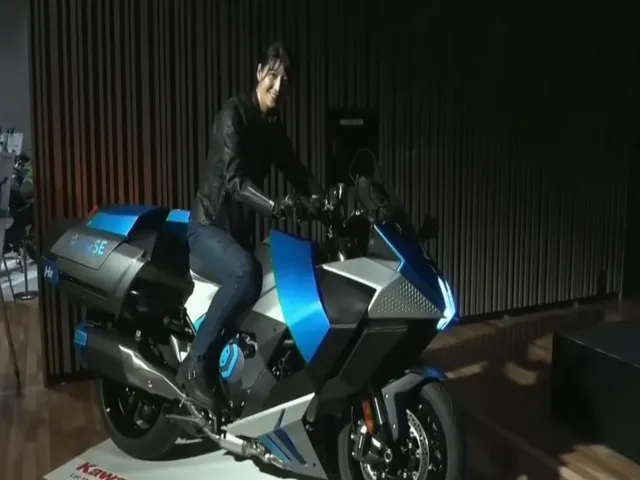
However, the amounts are minuscule compared to typical exhaust. With further refinement, Kawasaki anticipates reducing CO2 output from their design. Overall, the hydrogen model aims to maintain the visceral experience of gasoline while minimizing environmental impact.
If the technology proves viable, it could deliver green transportation with the thrills enthusiasts expect from high-performance motorcycles.
Modified Ninja H2 Maintains Traditional Combustion Process
While the demonstration motorcycle featured several adaptations, Kawasaki ensured the underlying engine function remains akin to gasoline models. Like standard internal combustion, the prototype introduced hydrogen gas into the air intake stream where it mixes thoroughly before ignition in the cylinders.
This preserves the visceral experience enthusiasts associate with combusting fuel amidst pistons and valves. Kawasaki’s design maintains the sensations of torque and vibration that stimulate the soul while upgrading to a kindler eco-friendly fuel.
With clever engineering solutions, Kawasaki found a way for traditional performance thrills and modern responsible power to coexist harmoniously.
Hydrogen Fuel Supply System Integrated into Motorcycle
Inconspicuously nestled against the profile, the demonstration machine incorporates its hydrogen fuel supply. A specially designed on-board system integrates storage, pressure regulation and injection components into the bodywork.
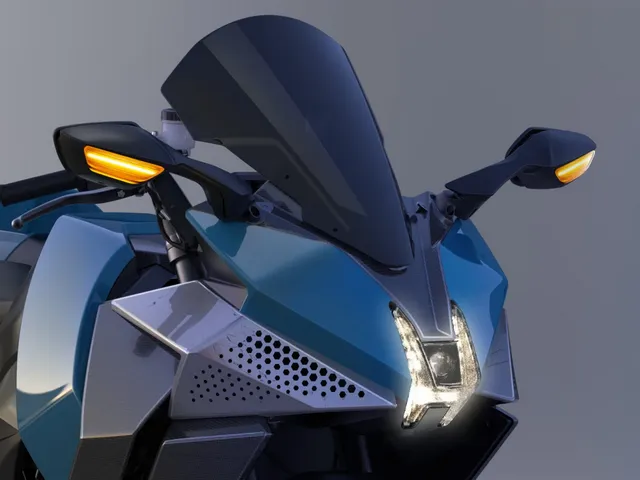
Kawasaki paid close attention to ergonomics, managing over 50 kg of storage mass appropriately. Riders can seamlessly interact with the new elements, refuel without disruption and concentrate on the ride instead of the powertrain transition.
With a hydrogen network in development, production models may charge onboard reservoirs similar to gas pumps for non-stop adventuring. Impressively, Kawasaki engineers smoothed hydrogen handling logistics into their sport prototype design.
Hydrogen Bike Emits Mostly Water and Minimal CO2
One of the primary motivations for Kawasaki’s hydrogen motorcycle is decreased environmental impact. Their tests show the modified engine emits water as the main product of combustion with hydrogen fuel.
Only trace amounts of carbon dioxide are released, representing an immense reduction over conventional fossil technologies. Kawasaki aims to minimize even the minor CO2 amounts before considering productionization.
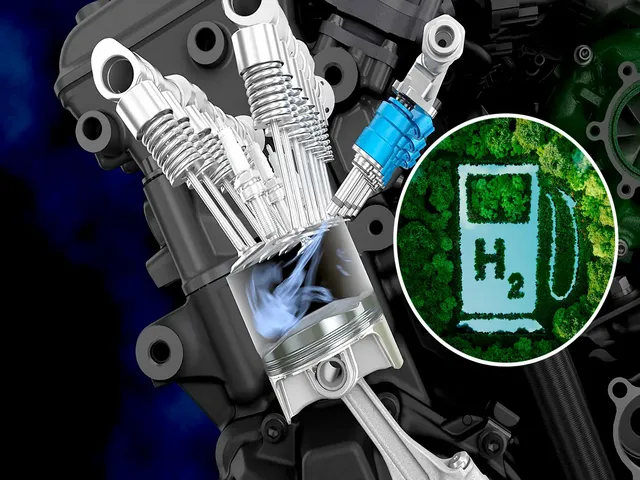
When hydrogen is sustainably sourced from water electrolysis using renewable energy, the emissions profile approaches completely carbon neutral. Riders can thrill responsible in knowing they leave behind glistening roads and a bright future, not greenhouse clouds.
Future Production Depends on Hydrogen Infrastructure Development
While Kawasaki hopes to introduce their hydrogen-powered motorcycle within the next decade, availability will likely vary between regions. Distribution infrastructure requires establishing a network of generation and fueling stations akin to gasoline pumps today.
Making the concept practicable hinges on these complementary technologies advancing in parallel. Japan is actively driving momentum through coalitions of industry partners and government backing. If collaborative projects bear success, mass markets accessibility could accelerate.
Elsewhere relies on matching investment to realize hydrogen mobility`s potential. Kawasaki conducts research with the goal of dealerships nationwide optimistically offering the groundbreaking machine by 2035.


